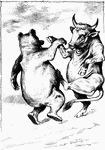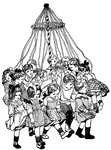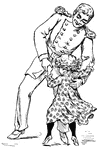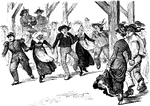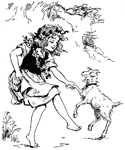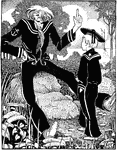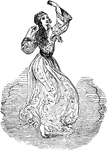Clipart tagged: ‘dancing’

An English King from the 9th or 10th Century, Possibly King Alfred
Illustration of an English king between AD 800 and 1000. The king is very likely King Alfred who reigned…

Civil War Musical Entertainment
"Extempore musical and terpischorean entertainment at the United States arsenal, Baton Rouge, La., under…

Elves and Fairies Dancing
According to Norse mythology, in Elfland, elves and fairies would dance in a circle in the moonlight.…

Flea Dance
An illustration of five fleas dancing on a platform. Two fleas are dancing together as a pair and the…

Heures a L'usaige de Chartre
Engraved ornaments from "Heures a L'usaige de Chartre" published by Simon Vostre.

Salatio
"Dancing. The dancing of the Greeks as well as of the Romans had very little in common with the exercise…
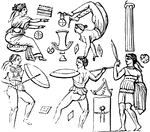
Salatio
"Dancing. The dancing of the Greeks as well as of the Romans had very little in common with the exercise…
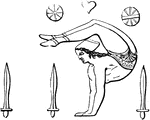
Salatio
"Dancing. The dancing of the Greeks as well as of the Romans had very little in common with the exercise…
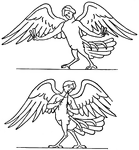
Sirens on a Greek Funeral Marble
"In Greek mythology, one of two, or three, or an indeterminate number of sea-nymphs who by their singing…
